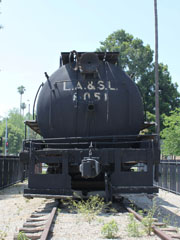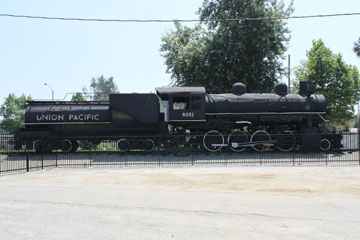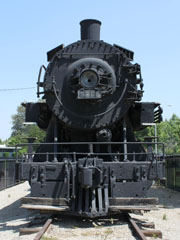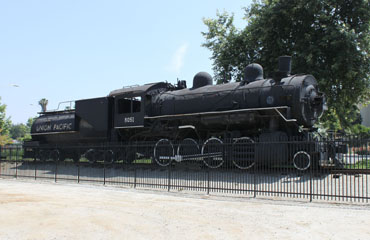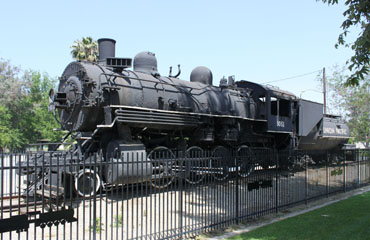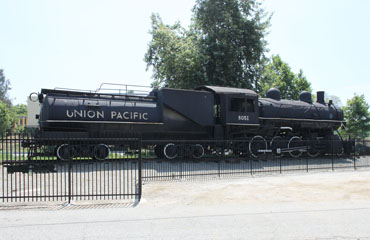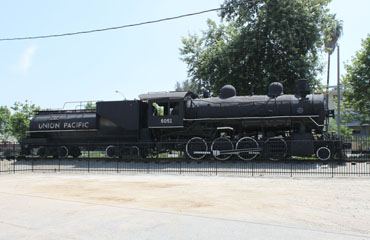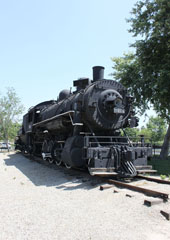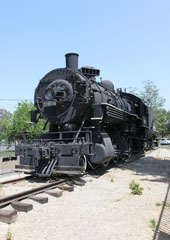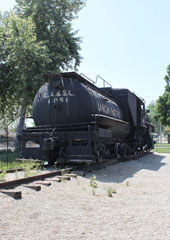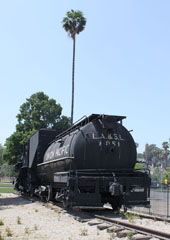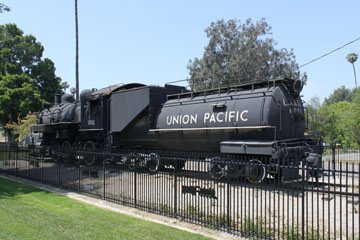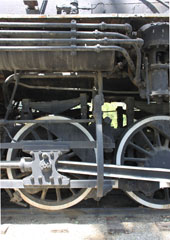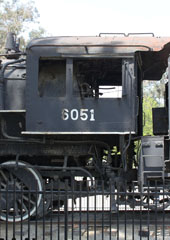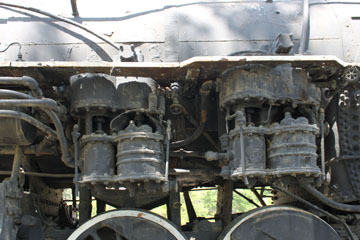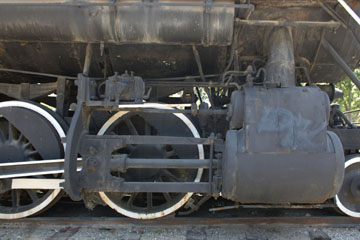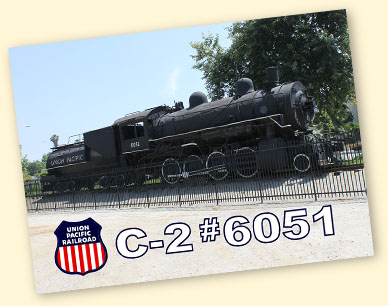

This Consolidation (2-8-0) type locomotive was
built in 1907 by Baldwin for the San Pedro, Los Angeles & Salt Lake Railroad as #642. In 1916, it became Los Angeles & Salt Lake #3642 and then #6051 in 1921 when the Union Pacific took over the LA&SL. Leased to the UP in 1936 and renumbered #6021, it was donated to the City of Riverside, CA, in 1954.
As built, #6051 weighed 187,000 lbs. The Vanderbilt tender weighs 135,050 lbs light and has a capacity of 7,000 gallons of water and 14 tons of coal. The engine has 57” drivers, Stephenson valve gear and 22” x 30” cylinders. With a 49.5 sq ft grate, 177 sq ft firebox and total heating surface of 3,403 sq ft, it operated at a boiler pressure of 200 psi delivering 43,305 lbs tractive effort. From 1936, superheaters were fitted to all in-service C-2s when one hundred and seventy-two boiler tubes were replaced by thirty-two flues. The engine weight rose by about 3,000 lbs, but little else changed.
You can see other Union Pacific C-2 Consolidations on the UP C-2 #237 and UP C-2 #616 pages of this website.
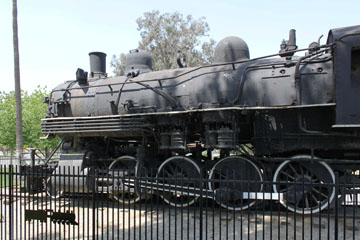
#6051 is an example of one of four Harriman “Common Standard” locomotive designs developed for the Associated Railroads (the others were the 4-4-2, 4-6-2 and 0-6-0).
“Common Standard” was a Southern Pacific initiative to standardise designs and thereby lower costs on everything from locomotives, dining cars and passenger coaches to cabooses and signal lanterns. After the UP took control of the SP in 1901, the approach was known as the “Associated Lines Common Standard”. In 1904, the operating and mechanical departments of the two railroads were amalgamated, the UP adopted the Common Standard and the combined system shared many groups of locomotives, cars and other equipment.
E. H. Harriman was Chairman of the UP’s Executive Committee from 1898 until he died in 1909. From an initial interest in the Lake Ontario Southern, he became a major railroad tycoon. As a result, “Common Standards” featured on many US railroads during the early 20th Century.
You can see a Southern Pacific “Common Standard” Consolidation on the SP C-10 #2852 page of this website.


